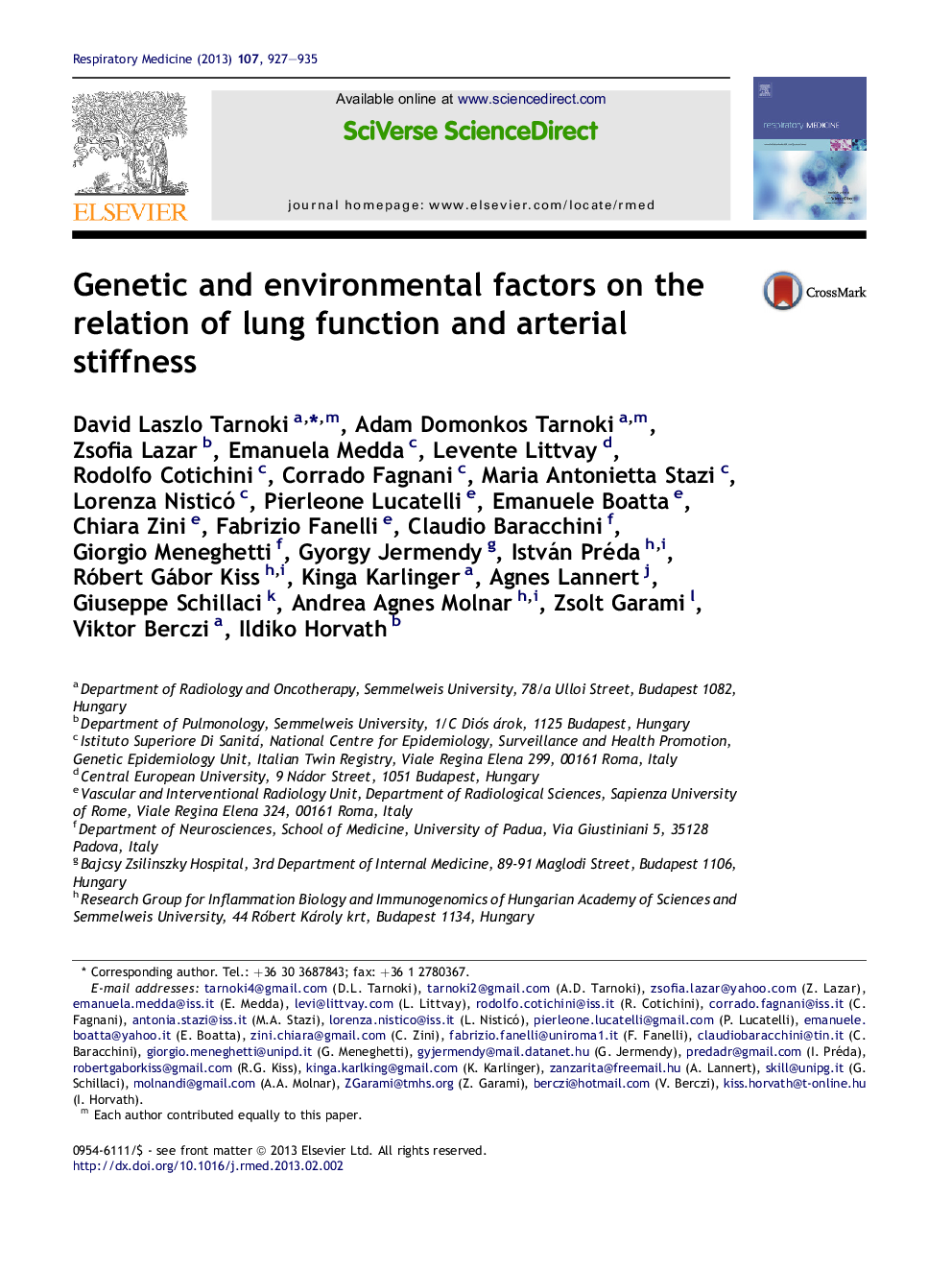| Article ID | Journal | Published Year | Pages | File Type |
|---|---|---|---|---|
| 4210497 | Respiratory Medicine | 2013 | 9 Pages |
SummaryBackgroundAn association between reduced lung function and increased cardiovascular risk has been reported, but the underlying mechanisms are unknown. The aim of this study was to assess the heritability of lung function and to estimate its genetic association with arterial stiffness.Methods150 monozygotic and 42 dizygotic healthy Hungarian and American Caucasian twin pairs (age 43 ± 17 years) underwent spirometry (forced vital capacity/FVC/, forced expiratory volume in 1 s/FEV1/; MIR Minispir, USA); and their brachial and central augmentation indices (AIx), and aortic pulse wave velocity (PWV) were measured by oscillometric Arteriograph (TensioMed Ltd, Budapest, Hungary). Phenotypic correlations and bivariate Cholesky decomposition models were applied.ResultsAge-, sex-, country- and smoking-adjusted heritability of FEV1, percent predicted FEV1, FVC and percent predicted FVC were 73% (95% confidence interval /CI/: 45–85%), 28% (95% CI: 0–67%), 68% (95% CI: 20–81%) and 45% (95% CI: 0–66%), respectively. Measured and percent predicted FVC and FEV1 values showed no significant phenotypic correlations with AIx or aortic PWV, except for phenotypic twin correlations between measured FEV1, FVC with brachial or aortic augmentation indices which ranged between −0.12 and −0.17. No genetic covariance between lung function and arterial stiffness was found.ConclusionsLung function is heritable and the measured FVC and FEV are phenotypically, but not genetically, associated with augmentation index, a measure of wave reflection. This relationship may in turn reveal further associations leading to a better mechanistic understanding of vascular changes in various airway diseases.
